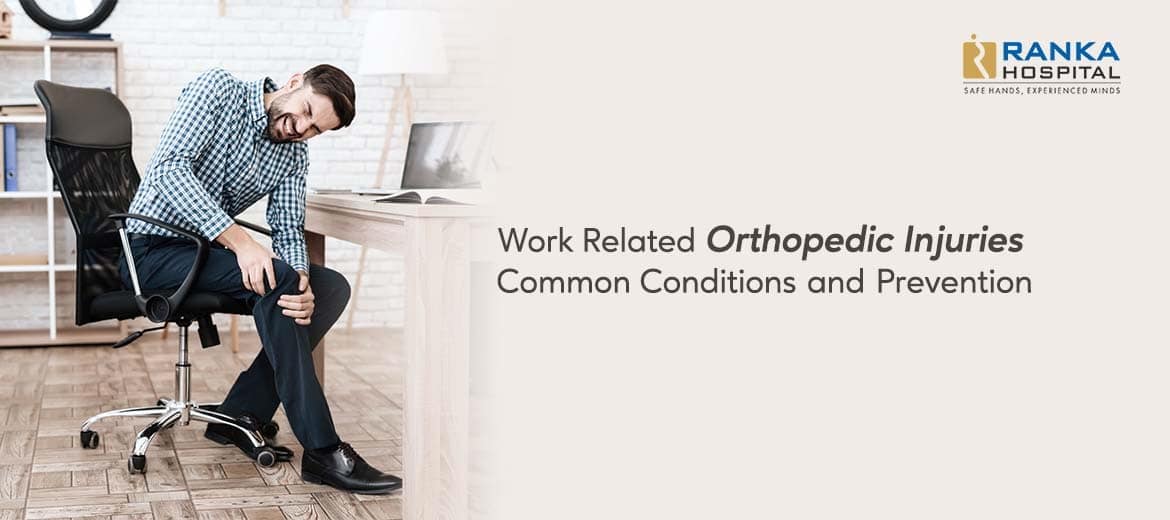Work-Related Orthopedic Injuries: Common Conditions and Prevention
Every year, orthopedic injuries affect millions of people worldwide. While people involved in labor occupations are more susceptible to these injuries, those involved in stationary jobs also are vulnerable. But what is an orthopedic injury and what are the various types of orthopedic injuries? Let’s throw some light on the topic in this blog.
What is an Orthopedic Injury?
An injury affecting the musculoskeletal system, including ligaments, tendons, bones, muscles, and joints is an orthopedic injury. Such injuries stem from overexertion, repetitive motion, falls, bending, and slips.
Types of Occupational Orthopedic Injuries
Let’s look at some work-related orthopedic injuries based on their type, including overexertion, repetitive motion, and reaction.
1. Overexertion Injuries
As the name suggests, these injuries occur in cases involving abundant physical hard work. Going overboard with activities like lifting, pushing, pulling, moving, etc., can push the body beyond its limits and cause injuries.
Such injuries are common in truck drivers, warehouse workers, construction laborers, etc. But one cannot blame merely physical activities for overexertion injuries. A white-collared professional working for 18-20 hours may also fall prey to them.
Some common overexertion injuries include muscle strain, back injuries, and joint connective tissue injuries. Muscle strain may not seem serious. However, they can affect a particular action, impacting the employee’s performance.
On the other hand, back injuries have also become very common. Most of them can be treated with rest and anti-inflammatory medicines. But the more severe ones may require physiotherapy or surgery. Joint and connective tissues can include conditions like a dislocated joint, tendon tear, or swollen connective tissue.
2. Repetitive Action Injuries
Repetitive motion injuries affect tendons, muscles, and ligaments. They stem from the repeated use of a particular joint. For instance, something like typing for long hours can also strain the muscles and tendons. The same case is with people involved in repetitive actions while performing heavy physical tasks.
Tendonitis, carpal tunnel syndrome, rotator cuff injuries, and bursitis are some common conditions associated with such types of injuries.
Carpal tunnel syndrome occurs when the median nerve is compressed due to swollen or inflamed ligaments and tendons surrounding it. Tendonitis is a condition associated with tendons connecting the muscles to the bones that can get inflamed or injured due to repetitive actions. Usually, people from the construction industry are prone to tendonitis.
Bursitis features the swelling of the bursa (small, fluid-filled sacs working as cushioning between the bone and muscles, tendons, or skin). The condition results from placing repetitive and continuous pressure on the joints. Rotator cuff injuries are common in people performing jobs that require them lift and reach. They can cause partial or complete tears and may take time to develop.
3. Reaction Injuries
The next set of injuries is reaction injuries. But what are reaction injuries? Imagine an employee slips on a wet surface and attempts to steady himself with a jerk. That sudden reaction to the situation can pull a muscle or in severe conditions, break the bone! Such sudden reactions can lead to various orthopedic injuries like whiplash, pulled muscle, strained neck, or a meniscus tear. In some cases, the person may not feel the impact immediately but realize it later. By then, there’s a chance that the injury will worsen!
Prevention of Work-Related Orthopedic Injuries
Here are some preventive measures for employers and employees.
1. For Employers
- Assess workplace safety and address workplace safety concerns
- Train workers and all other employees on health and safety practices and policies
- Eliminate workplace safety hazards
- Install non-slip floor coverings
- Enhance workplace ergonomics
2. For Employees
- Stay cautious towards potential workplace hazards
- Wear proper worksite safety gear
- Avoid overexerting the body and take regular breaks
- Maintain the right body posture
- Adhere to the required lifting techniques
- Keep the worksite clean and uncluttered
Want to know more? Call us at +91 – 20 – 24261530 and book an appointment with us.

